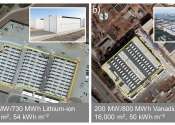Pinging pipes could help to identify lead water lines without excavation
As any percussionist or fidgety pen-tapper can tell you, different materials make different noises when you hit them. Researchers at Drexel University hope this foundational acoustic phenomenon could be the key to the speedy ...
Mar 7, 2024
0
13









